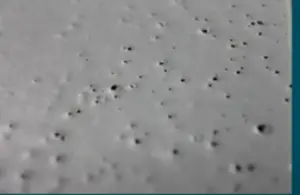
Giving your space a fresh coat of paint is exciting and it’s tempting to just grab a brush or roller and jump right in. But one of the most important first steps is to prime the concrete before painting. There are a number of situations where priming concrete is important.
There’s some people that argue that there is no need to prime concrete before applying paint. Well, here are some five good reasons why priming concrete before application is necessary.
Makes Paint Stick
The first reason and the most important reason you want the prime you to stick to the floor. So by priming, you will increase the chances of bonding. By priming concrete before painting, you’re taking a very good step in avoiding problems such as the coatings peeling off the concrete. It might not necessarily rid the problems, but will help avoid them.
Prevents bubbles

By priming, you do reduce the emergence of bubbles. This is very important. When you have thicker coatings like self leveling-floors, you really want a prime. By priming you’re going to seal off the concrete. Remember there are many reasons why that will cause bubbles and flaws. So make sure if you are priming and sealing the floor off properly that will reduce the chances of bubbles emerging in your floor.
Helps understand the floor.
By priming you get a good feel for the concrete floor. By priming, you get to know the floor better. It starts showing you its weak sides and its good sides. By priming, you actually all problems in the floor became visible, so you can get an idea of how the floor is behaving and what you can do to improve it including what you need to look out for before applying the next coating.
Related:Best Garage Floor Paint: Reviews & Buyer Guide
Saves on the paint/coat
By applying a primer, you actually spend less product on the actual coating and less consumption. What happens is when you don’t apply a primer and you apply the first coating, a lot of that coating will be absorbed by the substrate and you may have to add multiple codes just to make the floor look nice.
So where you might have thought you’re saving money by not applying a primer, you’re actually going to spend more money because you’re going to end up applying more coats or you’re going to have a higher consumption pair quote. So by applying a primer, you seal off the surface and that will actually save you money for the next steps.
Eliminates dust.
By applying the primer, you do eliminate dust. If you have a concrete that is very dirty, it can be pretty difficult to work in. Once you start applying a primer, the dust was immediately eliminated. So by applying the primer we kind of eliminated the dust and then it was possible to proceed onto the next steps. It really does help reduce the dust, so you can then actually go to work on the real floor which is the actual coatings in the top coat you want to be applying.
So why prime concrete before painting?
- Well, first and foremost, priming will always ensure good adhesion of the paint to the surface. Think of it as a magnet for your finished paint.
- Priming is commonly used to cover dark colors to make it easier for the finished coat to hide better. Adding some tint to the primer will even help the finished coat cover better too.
- Another reason to use prime is when you’re painting walls that have a high gloss finish or painting very smooth surfaces such as cabinets or shelves, slightly sanding these services and priming them will provide the best possible adhesion.
- Priming patched areas is also good practice. This allows the finished coat to dry to a uniform shape. If patched areas are not primed, the finished coat will look dull over those spots. This occurs because the repairs are not properly sealed.
- Lastly, priming stains caused by water or smoke damage is critical. Priming these types of stains first will prevent them from bleeding through to the finished coat. If you skip priming, it could take more coats of finish paint to cover
So what’s the best primer to use?
Well for interior projects, you can’t go wrong with a good multipurpose primer such as Dunn Edwards Ultra Drip Premium which provides excellent adhesion, seals repairs well, blocks most stains and provides very good coverage.
But keep in mind for the toughest stains you’ll need to use a more specialized primer. Dunn Edwards block at premium stain blocking primer uses the latest waterborne now good technology to cover anything from lipstick to smoke damage, basically the toughest stains on the planet.
Conclusion:
Remember priming ones sure your paint stays and looks good for years to come. So if you’re ever in doubt on whether to prime or not prime, always prime. That’s my advice. And make sure that the primary goes in the floor, in the substrate, in the concrete. You don’t want to just like float it on top. You want to make sure the primary purpose is to penetrate the substrate to make it bond better with the concrete.
How Long to Stay off Epoxy Floor
Contents
